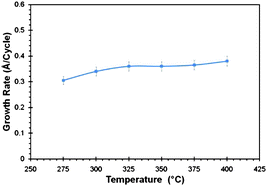Atomic layer deposition of CaB2O4 films using bis(tris(pyrazolyl)borate)calcium as a highly thermally stable boron and calcium source†
Abstract
The

* Corresponding authors
a
Department of Chemistry, Wayne State University, Detroit, Michigan, USA
E-mail:
chw@chem.wayne.edu
Fax: +1 313 577-8289
Tel: +1 313 577-5224
b Forschungszentrum Dresden-Rossendorf, Postfach 51 01 19, Dresden, Germany
The

 Please wait while we load your content...
Something went wrong. Try again?
Please wait while we load your content...
Something went wrong. Try again?
M. J. Saly, F. Munnik and C. H. Winter, J. Mater. Chem., 2010, 20, 9995 DOI: 10.1039/C0JM02280B
To request permission to reproduce material from this article, please go to the Copyright Clearance Center request page.
If you are an author contributing to an RSC publication, you do not need to request permission provided correct acknowledgement is given.
If you are the author of this article, you do not need to request permission to reproduce figures and diagrams provided correct acknowledgement is given. If you want to reproduce the whole article in a third-party publication (excluding your thesis/dissertation for which permission is not required) please go to the Copyright Clearance Center request page.
Read more about how to correctly acknowledge RSC content.
 Fetching data from CrossRef.
Fetching data from CrossRef.
This may take some time to load.
Loading related content
